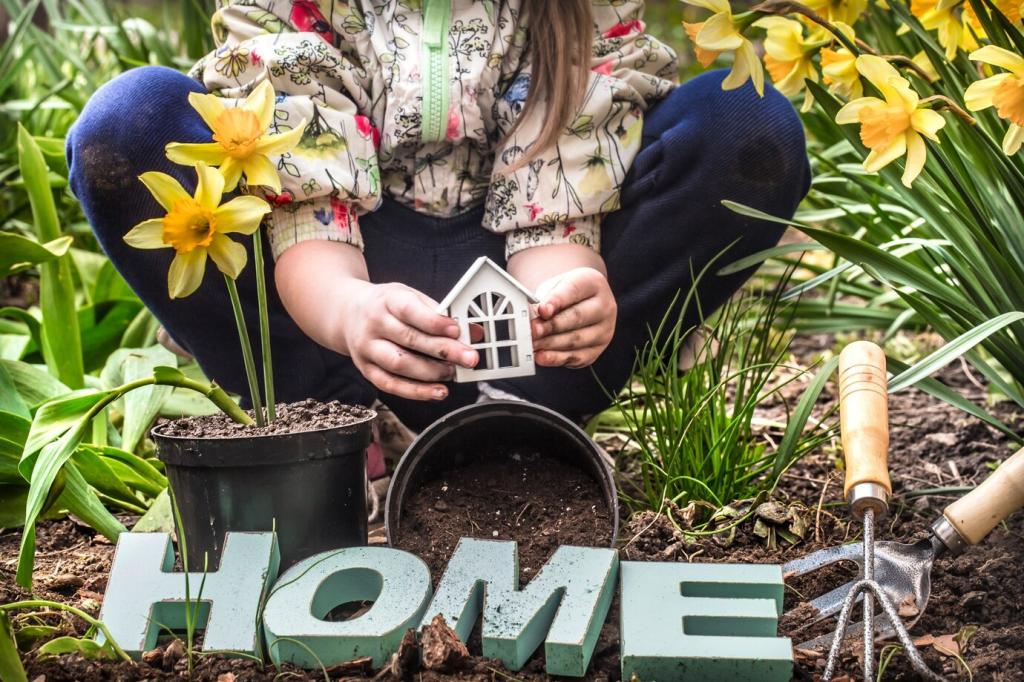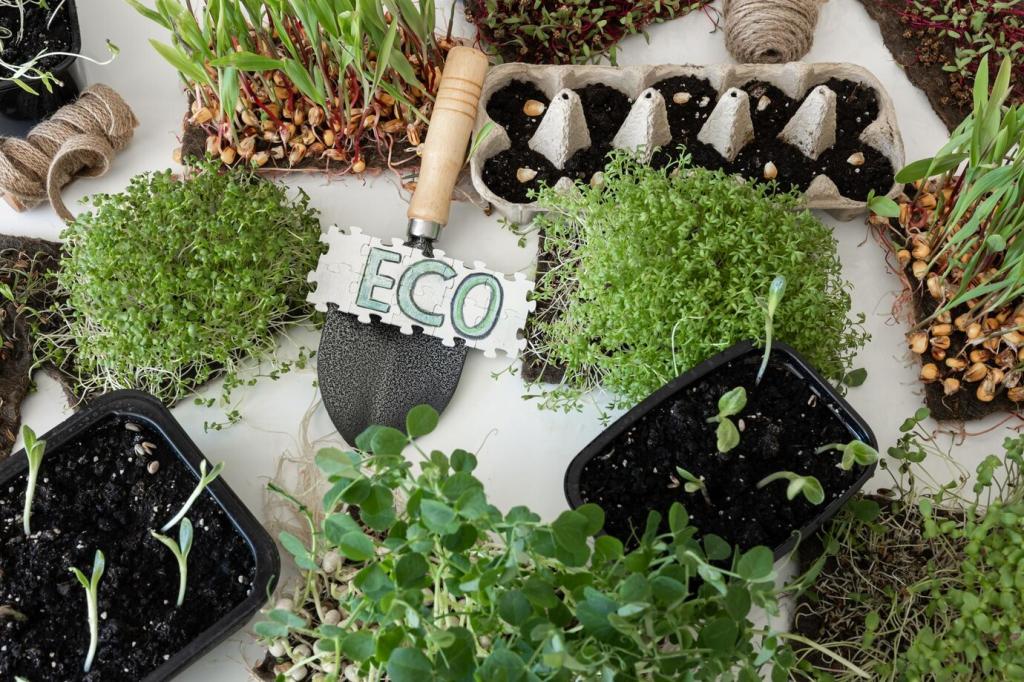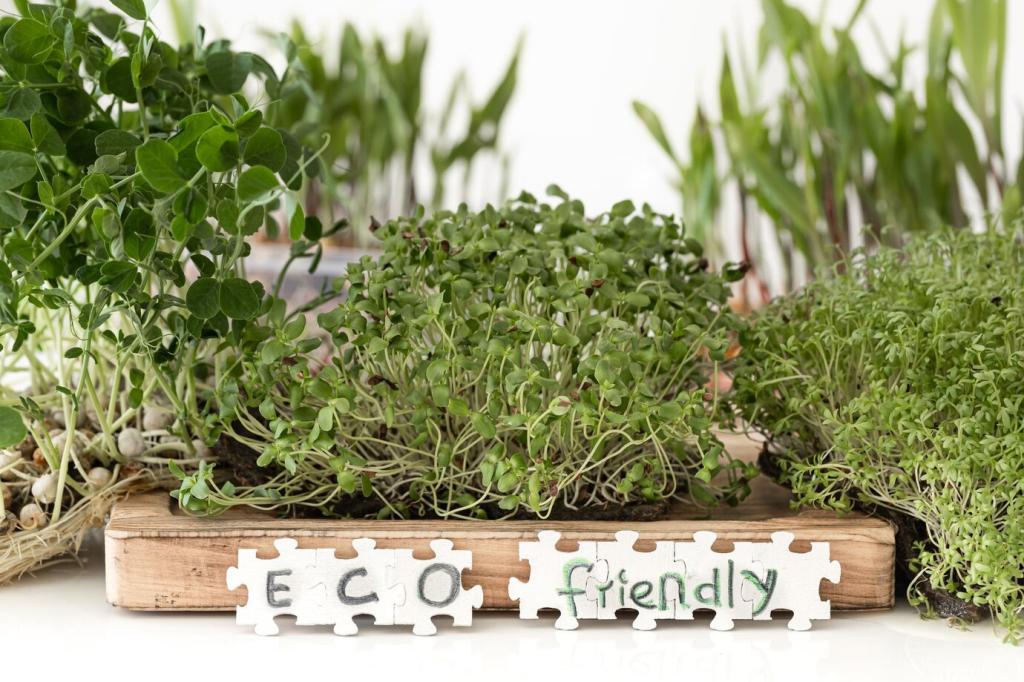
Sustainable Water Management in Landscapes
Chosen theme: Sustainable Water Management in Landscapes. Welcome to a fresh, practical journey into designing with every drop in mind—where soils, plants, and smart systems work together to honor water. Explore real strategies, relatable stories, and simple habits that make landscapes resilient. Join the conversation, subscribe for field-tested insights, and help shape a water-savvy future.
Reading the Landscape Water Cycle
Map where rain lands, how it travels, and where it disappears. Trace roof lines, pavements, and slopes to reveal opportunities for capture, slow release, and infiltration. Share a quick sketch of your site’s water pathways and ask the community for feedback on overlooked flow patterns.

Soils, Mulch, and Microtopography
01
A one-percent increase in organic matter can significantly boost water-holding capacity. Blend compost thoughtfully, avoid over-tilling, and foster soil biology with leaf litter and root diversity. Share a before-and-after photo of your amended beds and tell us how runoff changed during the first rain.
02
Organic mulches reduce evaporation, moderate temperature, and nurture soil life. Choose locally available wood chips or shredded leaves, and replenish annually. Keep mulch away from trunks and stems to prevent rot. Comment with your favorite mulch materials and their performance through heatwaves or sudden storms.
03
Gentle swales and basins capture sheet flow and guide it toward roots instead of drains. Mirror natural contours, then reinforce with deep-rooted plants. Share a quick time-lapse of your basin filling during a rain, and subscribe for a step-by-step swale layout guide next week.
Planting for Thirst-Smart Beauty
Native Guilds That Share and Save
Combine native overstory, understory, and groundcovers that cooperate—catching, shading, and sharing resources. Such guilds preserve moisture, resist pests, and reduce irrigation needs. Tell us your region and we’ll compile a crowd-sourced list of resilient native plant guilds for your climate zone.
Root Depth Diversity for Stability
Blend deep taproots with fibrous mats to capture water across soil layers and anchor slopes. This diversity cushions against droughts and sudden deluges. Post your favorite deep-rooted species and how they performed during last summer’s heat dome or this spring’s heavy rainfall.
Shade as Living Irrigation
A layered canopy reduces soil temperatures and evaporation. Position trees to shade hardscapes and wind-exposed edges, then understory shrubs to shelter sensitive perennials. Share a snapshot of your coolest summer microclimate, and subscribe to our tree-placement primer for maximum water savings.


Efficient Irrigation Technologies
Drip systems deliver water at the root zone and cut losses from wind and evaporation. Space emitters for uniform coverage, flush lines seasonally, and filter diligently. Share your emitter layout for feedback, and we’ll help troubleshoot pressure, clogging, or uneven distribution challenges together.
Efficient Irrigation Technologies
Weather-based controllers adjust schedules to rainfall and temperature, while soil moisture sensors provide real-time, root-zone truth. Start with conservative run times, then calibrate monthly. Comment with your favorite controller model and the percent savings you’ve observed after a season of tuning.
Rainwater Harvesting and Greywater Reuse
Cisterns with Purpose
Size cisterns according to roof area and rainfall patterns, then integrate overflow to rain gardens. Include first-flush diverters and screen inlets for debris control. Post a sketch of your catchment area, and we’ll help estimate storage capacity and recommend overflow strategies for storms.
Rain Gardens and Bioswales That Breathe
Shallow depressions planted with tolerant species capture runoff and let it seep slowly. Choose deep-rooted natives, add compost, and mulch generously. Share a planting list that worked in heavy clay or sandy soils, and subscribe for our rain garden species matrix by climate region.
Greywater: From Sink to Soil
Laundry-to-landscape systems can hydrate shrubs and trees with lightly used water. Follow local codes, use plant-friendly soaps, and disperse flow with mulch basins. Tell us your jurisdiction and we’ll gather community guidance on permits, installers, and maintenance tips that keep systems safe.


Baselines Before Breakthroughs
Start with meter readings and historical bills to establish a baseline. Then log rainfall, irrigation minutes, and soil moisture. Make one change at a time to isolate effects. Comment with your baseline numbers and we’ll help calculate realistic savings targets based on climate and plant palette.

Seeing Patterns with Simple Dashboards
A monthly chart of rainfall, ET, and irrigation run time reveals hidden trends. Use color coding to flag anomalies and tune schedules. Subscribe for a lightweight spreadsheet template and share a screenshot of your dashboard so others can borrow your best visualization tricks.

Celebrating Results and Iterating
When your rain garden captures a storm or your drip upgrade cuts usage, share the story. Celebrate, then ask: what’s next? Invite neighbors to replicate success. Post your savings percentage and lessons learned—your experience could be the nudge someone needs to start their own project.
Community Habits That Save Water
Teach household members and caretakers how to pause irrigation after rain, adjust seasonal programs, and spot leaks early. Create a laminated quick-start guide. Share your cheat sheet template and subscribe for our printable card set designed for volunteers, tenants, and busy family members.
